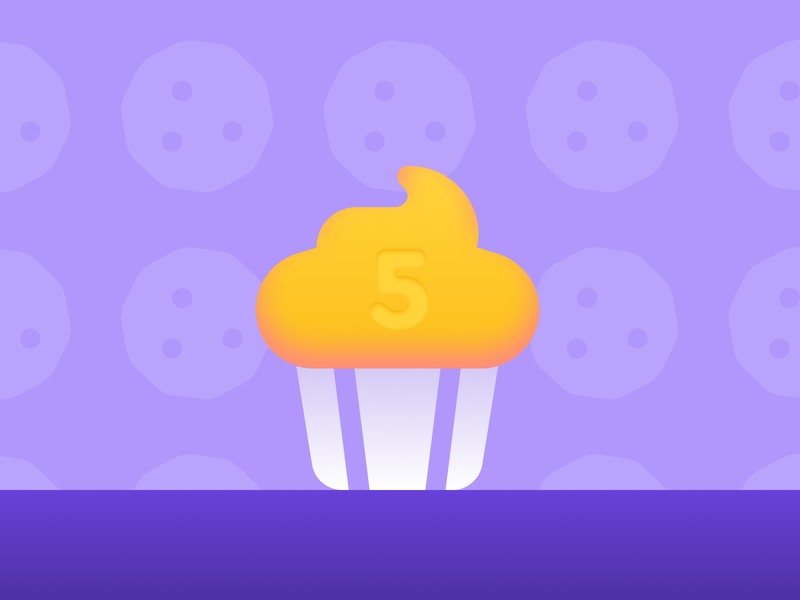At Font Awesome, we take pride in working with the very best people we know, not only those with top tier professional skills, but the kind of quality people you want to work with every day. That’s why we were so thrilled when Noah Jacobus joined the Font Awesome team as an icon designer. In the inaugural Nerd Show and Tell Podcast, Noah tells us about the monumental task of creating the upcoming Font Awesome Sharp icon family and shares his love of minimal, retro styled games.
Here are a few of our favorite quotes from our conversation.

You have a background in music education, but as it turns out, music and the visual arts have a lot in common. What can you tell us about that?
Well, it’s actually a lot of the things that you look for. Like, a large part of at least learning to play music in a more traditional sense, like in a concert band or an orchestra or something like that. And learning how to analyze and interpret material has a big crossover, I think, into the visual arts especially. And there’s even a lot of shared terminology between say, music and visual design. For example, when we talk about things like visual rhythm and hierarchy, developing a visual rhythm of knowing where to look, those kinds of things.
When someone is listening to a piece of music and knowing how it should flow a little bit with expected chord progression and expected rhythm. Knowing where the beats are going to fall can help put someone at ease in that way. Developing visual rhythms through hierarchy and grid usage and things like that are a big way towards helping guide someone to understanding a piece of visual information in kind of a similar way.

You had a big project ahead of you when you first started. Didn’t you jump right into Sharp icons?
… One of the main things that kind of got me on board initially was this push to get Sharp released. As of now at least, we have got Sharp Solid out in the world and a lot of people are loving it, which is fantastic. So most of the splits — well, actually every single split since I began has been working on Sharp in some capacity. There’s been some other fun stuff mixed in.

Doesn’t creating or tweaking thousands of icons get laborious?
Yeah, it’s been a weird labor of love because I love icons so much, which to a lot of people sounds weird, but it’s right in my wheelhouse of a very niche thing I really enjoy doing and a lot of other people don’t. So that works out. It has been thousands and thousands of icons at this point. This kind of scratches an itch that never used to get scratched at previous jobs, especially my last one, which was working at an agency. So it was a lot of quick turnarounds, a different client every two or three weeks.

But not all icons lend themselves to sharpness. Plus, do you really want your toilet paper to be “sharp”?
Yeah, that was an interesting thing. A little bit of the Sharp work had started before I came on with Jory. Some contract folks had started to test the waters a little bit to see what a Sharp style would look like. So that was like a decent exploratory stage at the beginning when I came on to basically take a whole batch of icons and kind of run them through a gauntlet of like, what do we want the new rules to be? We want them to still make sense as Font Awesome icons and to use the same dimensions and proportions. But version 6 was already pretty rounded and friendly, and so it was kind of like, how can we manage that?
To your point, we have a lot of circular stuff and even just plain circle icons. There’s nothing to be done about that, really, when it comes to sharpening. And you kind of have to walk that line of clarity versus cleverness in this. Like, we could make these all super angular and super sharp, and then they make absolutely no sense. Like, you cannot understand what this icon is supposed to mean or it no longer bears any resemblance to Font Awesome classic. So kind of hacking away rounded bits and still keeping some level of curves.
All of our people icons are a good example of that, like people in various poses and doing different things. Especially with organic things like people or food, there has to be some level of curvature so they’re still able to read. So if you’re looking at all our people icons, we kept all their butts round because that was one thing we identified.

What are you nerding out about outside of work these days?
The two main things I do outside of work are Dungeons & Dragons and video games. More specifically, I’ve been taking an interest in a lot of retro gaming: even more specifically, retro handhelds. I wasn’t able to have one growing up, but I had a lot of friends who had Game Boys and stuff, and so I kind of leached off of them whenever I could.

The resurgence of interest in that, as well as some new stuff like the Playdate by Panic has been really cool to see in development. When you’re creating a portable handheld like this that’s inspired by the Game Boy and a lot of old things, you can choose which design constraints you want to embrace to kind of set it apart. Because the Playdate is kind of a weird form factor, and it has a black and white screen that doesn’t have a backlight. It’s got some very unique inputs on it, like buttons and things you might expect — but it also has an accelerometer and a crank on the side which is really interesting.



